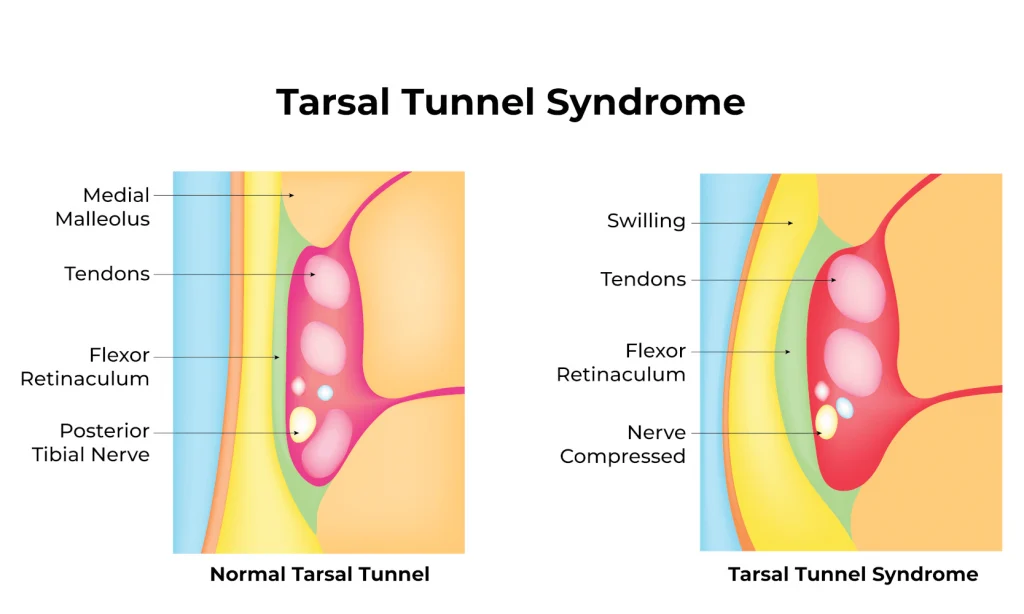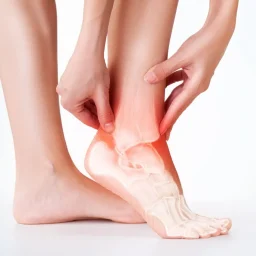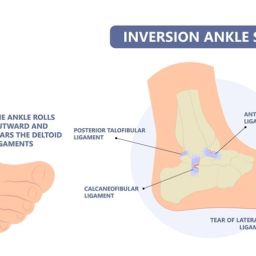
What is Tarsal Sinus Syndrome and What are the Symptoms?
Tarsal sinus syndrome, also known as sinus tarsi syndrome, is a relatively rare condition characterized by pain and instability in the foot’s tarsal sinus region. The tarsal sinus is a small tunnel-like structure located on the outside of the ankle between the talus and calcaneus bones.
Symptoms of tarsal sinus syndrome typically include persistent pain and tenderness in the area around the ankle. Patients often describe a dull, deep ache that worsens with activity and improves with rest. Swelling and inflammation can also be present, accompanied by a sense of instability or weakness in the ankle joint. Some individuals may experience difficulty walking or bearing weight on the affected foot.
The exact cause of tarsal sinus syndrome is not always clear, but it is commonly associated with trauma, such as ankle sprains or fractures, which can damage the tarsal sinus ligaments and lead to instability. Other factors such as overuse, arthritis, or structural abnormalities in the foot may contribute to the development of this condition.
Diagnosing sinus tarsi syndrome involves a comprehensive evaluation by a healthcare professional, typically a podiatrist or orthopedic specialist. The diagnostic process aims to rule out other conditions with similar symptoms and accurately identify the presence of sinus tarsi syndrome.
Diagnosing Sinus Tarsi Syndrome: What To Know
The diagnosis begins with a thorough examination of the affected foot and ankle. The healthcare professional will assess the patient’s medical history, including any history of ankle injuries or trauma. They will inquire about the nature and duration of symptoms and any specific triggers or aggravating factors.
During the physical examination, the healthcare professional will palpate the sinus tarsi area, checking for tenderness, swelling, or inflammation. They may perform specific maneuvers to assess stability and rule out other ankle pathologies.
Imaging studies are often employed to support the diagnosis. X-rays can help evaluate the bony structures of the foot and rule out any fractures or arthritic changes. Magnetic resonance imaging (MRI) scans provide detailed images of the soft tissues, allowing the healthcare professional to assess any ligamentous or tendon abnormalities within the sinus tarsi region.
In some cases, diagnostic injections may be used to help confirm the diagnosis. An injection of a local anesthetic into the sinus tarsi area can temporarily alleviate pain. If the pain significantly decreases or resolves after the injection, it suggests that sinus tarsi syndrome is the likely cause of the symptoms.
By combining the patient’s history, physical examination findings, imaging results, and response to diagnostic injections, the healthcare professional can make an accurate diagnosis of sinus tarsi syndrome. Once diagnosed, an appropriate treatment plan can be devised to address the individual’s specific needs and provide relief from the symptoms.
What Does Treatment for Sinus Tarsi Look Like?
The treatment of sinus tarsi syndrome involves various approaches depending on the severity of symptoms and underlying causes. The condition primarily affects the subtalar joint, ligament tears, and is often associated with flat feet or excessive pronation (inward turning) of the foot and ankle. Treatment options aim to alleviate pain, improve stability, and promote overall foot function.
In mild to moderate cases, conservative treatment methods are typically employed. These may include:
- Rest and activity modification: Avoiding activities that exacerbate symptoms and allowing the affected foot to rest and heal.
- Physical therapy: Specific exercises and stretches to strengthen the surrounding muscles, improve joint stability, and enhance overall foot and ankle function. Physical therapy may also focus on correcting biomechanical issues contributing to the condition, such as addressing flat feet or improper foot alignment.
- Orthotic devices: Custom orthotic inserts or arch supports can provide support and alignment correction to reduce stress on the subtalar joint and soft tissues.
- Footwear modifications: Wearing appropriate footwear with good arch support and cushioning to minimize strain on the foot and ankle.
- Anti-inflammatories: Nonsteroidal anti-inflammatory drugs (NSAIDs) may be prescribed to reduce pain and inflammation in the affected area.
- Immobilization: In some cases, temporary immobilization with a brace or walking boot may be recommended to promote healing and provide stability.
- Corticosteroid injections: Injections of corticosteroids into the sinus tarsi area may be considered for short-term relief of pain and inflammation.
If conservative measures do not provide sufficient relief, or in cases of severe or recurrent symptoms, further treatment options may be explored. These could include:
- Surgical intervention: In cases of persistent ligament tears or other structural abnormalities, surgical repair or stabilization of the subtalar joint may be recommended.
- Platelet-rich plasma (PRP) therapy: PRP injections involve using a patient’s own blood components to promote healing and tissue repair in the affected area.
It’s important to consult with a healthcare professional, such as a podiatrist or orthopedic specialist, for an accurate diagnosis and appropriate treatment plan tailored to individual needs. They can guide you through the available options and help determine the most suitable course of action to reduce pain, improve foot function, and enhance overall quality of life.
IF YOU’RE DEALING WITH ANY FOOT, ANKLE OR LOWER LEG PROBLEMS, MAKE AN APPOINTMENT WITH ONE OF OUR BOARD-CERTIFIED PODIATRISTS.
Are There Any Exercises You Can Do for Sinus Tarsi?
Yes, there are exercises that can help strengthen the surrounding muscles, improve stability, and alleviate symptoms associated with sinus tarsi syndrome. Here are a few exercises that may be beneficial:
- Ankle Alphabet: Sit on a chair with your feet lifted off the ground. Imagine tracing the letters of the alphabet with your toes, moving your ankle and foot in a controlled manner. This exercise helps improve range of motion and ankle mobility.
- Calf Raise Exercises: Make sure to stand with your feet shoulder-width apart. Now, slowly level up onto your toes. Hold for a few seconds, then lower your heels back down. Repeat for several repetitions. This exercise targets the calf muscles and can enhance overall foot and ankle strength.
- Toe Curls: While seated or standing, place a towel or small cloth on the floor and use your toes to scrunch and grab the fabric, pulling it toward you. Release and repeat several times. This exercise targets the muscles in the arch of the foot, promoting stability and strength.
- Balance Exercises: Stand near a wall or chair for support if needed. Lift one foot off the ground and try to balance on the opposite leg. Hold for as long as you can without losing balance. Repeat on the other side. This exercise helps improve balance and stability, which can be beneficial for managing sinus tarsi syndrome.
Remember to start slowly and gradually increase the intensity or duration of the exercises as tolerated. If you experience any pain or discomfort during or after exercise, it is important to stop and consult with your healthcare professional.
Why It’s Important to Get Professional Help!
It is important to consult with a healthcare professional, such as a physical therapist or podiatrist, before starting any exercise program. They can evaluate your specific condition and provide guidance on which exercises are most suitable for you. They may also recommend additional exercises or modifications based on your individual needs and goals.
We have extensive experience in diagnosing sinus tarsi syndrome, considering the unique characteristics of the sinus tarsi region. Our experts can accurately assess the condition and tailor treatment plans to each individual’s needs, considering factors such as scar tissue, biomechanical abnormalities, and underlying causes.
Visit Certified Foot and Ankle Specialists for the treatment of sinus tarsi syndrome due to our expertise in diagnosing and managing this condition. With our comprehensive lower extremity treatment approach, we specialize in addressing sinus tarsi pain and providing effective solutions for patients.
With nineteen locations throughout South Florida, Certified Foot and Ankle Specialists offer convenient access to their services. We provide a multidisciplinary approach to care, collaborating with in-house neurology, pathology, MRI, and diagnostic radiology departments. This integrated approach ensures comprehensive evaluation and accurate diagnosis, enabling precise treatment recommendations.
Our offices also offer additional services such as custom bracing, which can provide support and stability to the affected foot and ankle. This comprehensive range of services allows patients to receive comprehensive care under one roof, minimizing the need for referrals to multiple specialists.
By choosing Certified Foot and Ankle Specialists, you can benefit from their expertise, advanced diagnostic capabilities, and a wide range of treatment options. Our commitment to delivering high-quality care ensures that patients receive the personalized attention and comprehensive treatment necessary for managing sinus tarsi syndrome effectively.
Frequently Asked Questions (FAQ) About Sinus Tarsi Syndrome
1. What is sinus tarsi syndrome and what causes it?
Sinus tarsi syndrome is a condition characterized by pain and instability in the tarsal sinus region, a small tunnel-like structure located on the outside of the ankle between the talus and calcaneus bones. The condition is commonly caused by trauma such as ankle sprains or fractures that damage the tarsal sinus ligaments. Other contributing factors include overuse, arthritis, flat feet, excessive pronation (inward rolling of the foot), and structural abnormalities in the foot that place extra stress on the subtalar joint.
2. How do I know if I have sinus tarsi syndrome?
Common symptoms include persistent pain and tenderness on the outside of the ankle, particularly in the area between the ankle bone and heel. You may experience a dull, deep ache that worsens with physical activities like walking or running and improves with rest. Many patients also report swelling, inflammation, a sense of instability or weakness in the ankle joint, and difficulty bearing weight on the affected foot. A proper diagnosis requires evaluation by a podiatrist who will perform a physical examination and may use imaging studies like X-rays or MRI scans to confirm the condition.
3. Can sinus tarsi syndrome heal on its own without treatment?
While mild cases may improve with rest, sinus tarsi syndrome typically requires professional treatment for full recovery. Conservative treatment approaches include rest and activity modification, physical therapy exercises to strengthen surrounding muscles, custom orthotic devices for arch support, proper footwear with good cushioning, anti-inflammatory medications, and in some cases, corticosteroid injections. Without proper treatment, the condition can become chronic and lead to persistent instability and pain that affects your daily activities and quality of life.
4. What exercises can help with sinus tarsi syndrome recovery?
Several exercises can strengthen the ankle and improve stability. The ankle alphabet exercise involves tracing letters with your toes while seated to improve range of motion. Calf raises strengthen the calf muscles by slowly lifting onto your toes and lowering back down. Toe curls using a towel on the floor target the arch muscles and promote stability. Balance exercises, where you stand on one leg, help improve overall ankle stability. Start these exercises slowly and stop if you experience pain. Always consult with a podiatrist or physical therapist before beginning any exercise program to ensure the exercises are appropriate for your specific condition.
5. When is surgery necessary for sinus tarsi syndrome?
Surgery for sinus tarsi syndrome is typically considered when conservative treatments fail to provide adequate relief after several months, or in cases of severe or recurrent symptoms. Surgical intervention may be recommended if there are persistent ligament tears or structural abnormalities affecting the subtalar joint. The procedure usually involves surgical repair or stabilization of the damaged ligaments and structures. Some patients may also benefit from platelet-rich plasma (PRP) therapy, which uses your own blood components to promote healing. A board-certified podiatrist can evaluate your specific case and determine if surgical treatment is the most appropriate option for your recovery.






